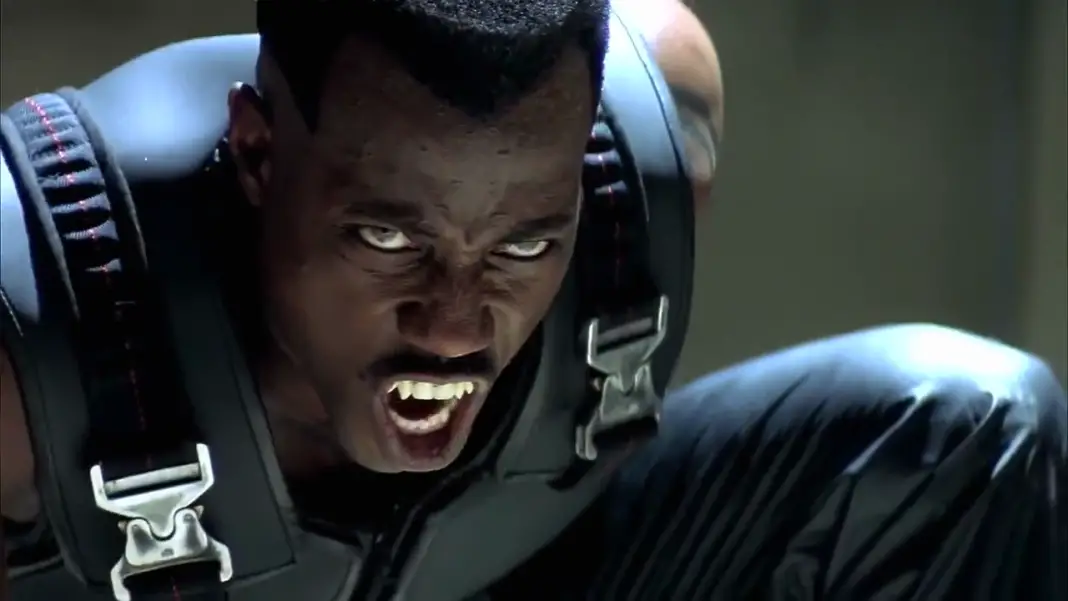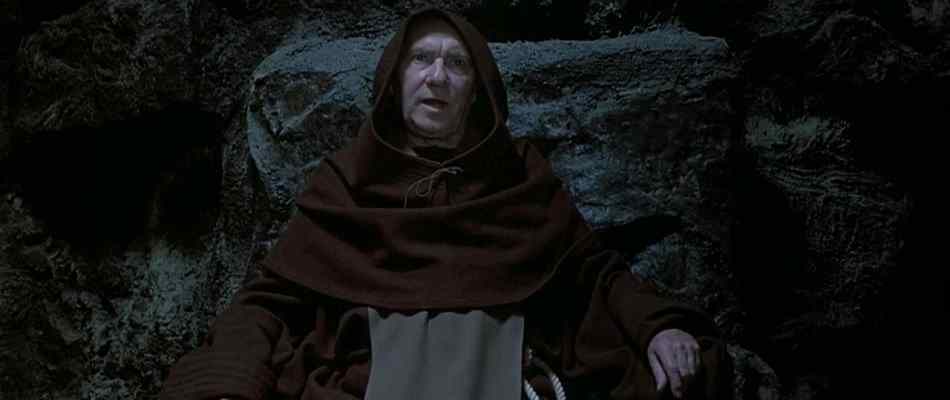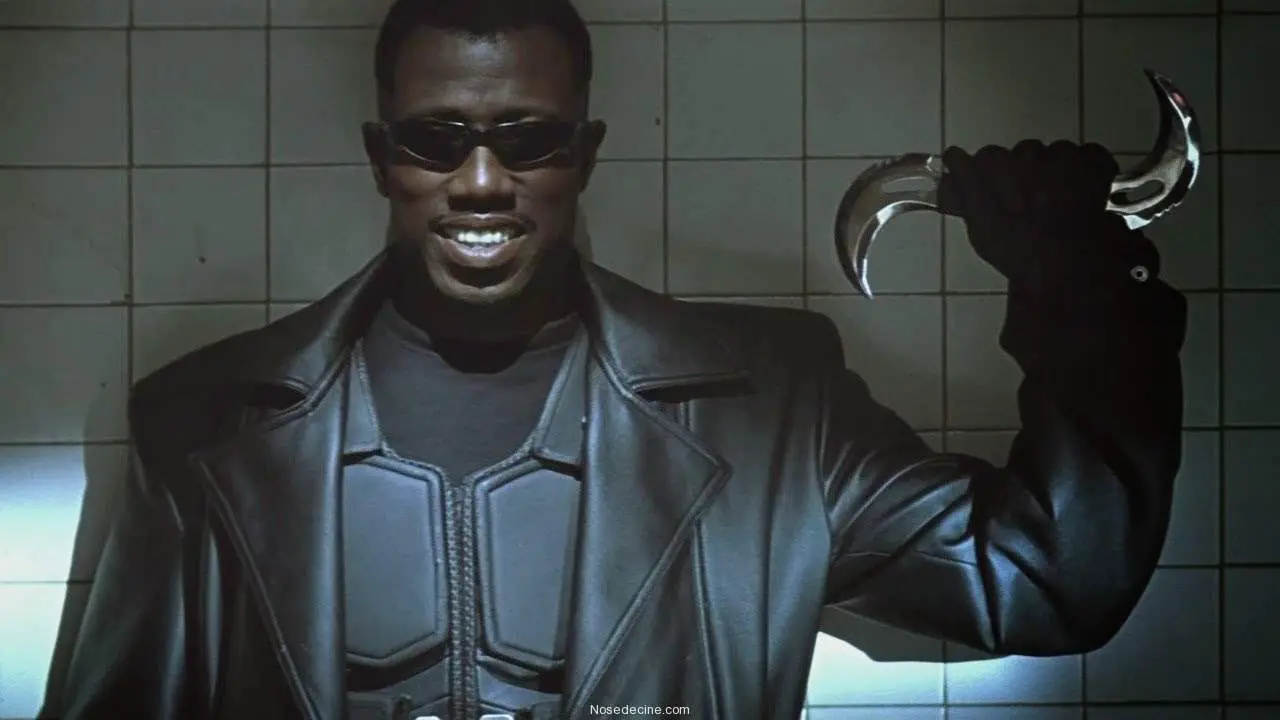Believe it or not, comic book movies did not always dominate the box office. There was a time when they weren’t all that popular and before that a time when they were barely getting made at all. We’ve lived in a state of uninterrupted box office success for comic-based productions for some years now. The feature that is usually credited as the game changer is X-Men, and that makes a lot of sense on paper. It was Marvel’s first theatrical superhero venture. Before that they had Howard the Duck in the 1980s and then straight-to-video versions of The Punisher and Captain America, plus a Roger Corman Fantastic Four that was never even supposed to be released. These were beyond flops. These were SyFy Channel quality. Yet in 1998, two years before X-Men, Marvel produced a film that changed everything.
It was Blade. The accomplishment of this movie cannot be understated. It wasn’t their most popular character, but they understood the value of it, and took the risk. It was their first successful feature ever. It paved the way for X-Men, which then paved the way for just about every Marvel property you could think of being adapted to the screen. It was this adaptation, produced not because it was a comic book property but instead because it was action-horror that happened to be based on a comic.

Blade actually followed a pretty standard tradition for comic book adaptations in the 1990s, and even before that. Besides Batman and Superman, comics were dead weight for films. This meant that for a comic feature to be successful, it had to be a part of a larger, more established genre: namely horror. This is why nearly every comic book movie in the 1990s had some element of horror to it. The Crow, Cemetery Man, Spawn, Tales from the Crypt: Demon Knight/Bordello of Blood, The Shadow, Vampirella and more all had their roots in supernatural horror.
Horror and comics have always been hand in hand. DC and Marvel both have their own versions of the classic monsters. In the 1950s, comics were dominated by the horror genre. Tales from the Crypt, Vault of Horror and the other EC Comics dominated the industry. The severe backlash against these comics had a huge impact on the medium, and also on the readers. Getting them cancelled only made them more legendary. The EC stories had a huge impact on kids who would then go on to be writers and filmmakers. Some of the biggest masters of horror—including Stephen King, John Carpenter, George Romero, and Stuart Gordon—cite EC Comics as one of their major inspirations.
 This quickly translated to film. Before Superman: The Movie hit the screen, there was the Amicus production of Tales from the Crypt, which paved the way for The Vault of Horror. DC’s next successful adaptation after bringing Superman to the screen was Swamp Thing, which was very much a horror comic—ironically more horrific than the feature itself. While Creepshow was not based on a particular comic, it was a heartfelt love letter that remains one of the most faithful representations of the EC style and everything those comics represented.
This quickly translated to film. Before Superman: The Movie hit the screen, there was the Amicus production of Tales from the Crypt, which paved the way for The Vault of Horror. DC’s next successful adaptation after bringing Superman to the screen was Swamp Thing, which was very much a horror comic—ironically more horrific than the feature itself. While Creepshow was not based on a particular comic, it was a heartfelt love letter that remains one of the most faithful representations of the EC style and everything those comics represented.
When Batman was released in 1989 it was one of the biggest blockbusters of all time. It was definitely marketed toward a wide audience, but it was a much, much darker incarnation than the Adam West Batman of the 1960s. It’s interesting that instead of leading to more DC superheroes coming to the screen, Batman led to a series of dark comic adaptations. It paved the way for movies like The Crow and Spawn, both of which were comics rooted in horror, all similar in their dark revenge plots and Gothic production design.
Horror has played an integral role in bringing comic book features to the big screen from the very beginning. Even now, horror themed comics continue to be adapted with varying degrees of success. It was horror that proved comics could work on film. It was the success of Blade that put Marvel’s movies on the map, leading to X-Men, Spider-Man and so on. The next time you go see a major Marvel epic, remember that vampires, ghosts and things that go bump in the night were what tested the waters and allowed for these massive franchise epics to happen.
Follow us on social media: Twitter and Facebook
Post Views:
19



